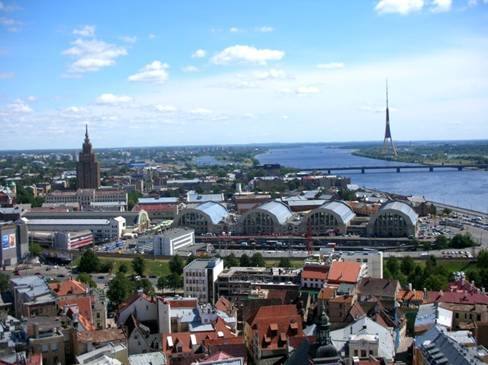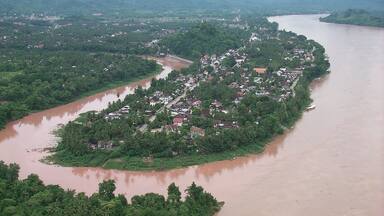The Historic Centre of Riga, Latvia, was inscribed on the World Heritage List in 1997 for its urban and architectural values. The city’s urban morphology is a fine example of the development and evolution phases of a northern European city. The urban fabric of its medieval centre reflects the prosperity of the city between the thirteenth and fifteenth centuries when it was an important centre of the Hanseatic League, the powerful association of northern European merchant towns. Riga’s centre also includes a large number of Art Nouveau/Jugendstil buildings and both the city centre and outskirts are characterised by remarkable wood structures. This heritage of wood edifices, however, is very fragile and protecting it and raising awareness on heritage values became essential.
Latvian authorities established new legislation to ensure the protection and management of the site. The main challenges lay in the follow-up and enforcement of legislation, and in setting up an advisory process with private investors. Including heritage culture among city development issues was the major challenge.
Latvia requested technical assistance for urban site conservation and the conservation of their wood structure heritage, which led, between 2002 and 2007, as part of the France-UNESCO Cooperation Agreement, to several technical monitoring and cooperation missions between the national heritage services and services of the City of Riga, together with exchanges based on the ongoing decentralised cooperation between Latvia and France. This technical assistance was supported by both the French Ministry of Culture and the French Ministry of Public Works at the time.
In 2002, a French inspection expert of the Heritage Branch of the Ministry of Culture participated in a one-day seminar (20 December, 2002) organised by the City of Riga to present the safeguarding plan for the city inscribed on the World Heritage List "Preservation and Development Plan of the Historic Centre of Riga".
In April 2003, a mission of technical expertise was organized by the UNESCO World Heritage Centre in response to a request from Latvian authorities to send experts to evaluate and assess the Preservation and Development Plan of the Historic Centre of Riga. This mission was entrusted to a city architect for heritage sites, specialist of safeguarded areas and an inspection expert of the Heritage Branch of the French Ministry of Culture and was carried out within the framework of the France-UNESCO Convention. At the request of the City of Riga, the experts were able to examine the proposed safeguarding and development plan project developed by the city. Discussions with the city allowed them to examine various aspects of the plan, heritage identification and location, land laws and use, regulations and monitoring and control mechanisms, together with the interaction between the various institutions and stakeholders without neglecting resources and skills. Discussions also underscored the importance of harmonising existing tools.
This mission was followed by two others in 2004 (from 21 to 25 April) and 2005 (from 13 to 16 April), conducted at the request of the City of Riga to continue accompanying the Preservation and Development Plan of the Historic Centre of Riga and consider the possible establishment of a centre for wooden architectural heritage. In addition, the missions sought to:
- assess the results of the work carried out,
- answer the questions of the city both in terms of method and possible considerations for development,
- assist city services to provide answers that were as precise as possible to questions on specific, physicallyisolated problems,
- list additional issues that merited inclusion in the preservation and development plan of the historic centre and its outskirts.
In 2005, an urban conservation architect and planner and an expert on wood structures together with a World Heritage Site representative further examined the draft safeguard and development plan and provided a set of specific recommendations in response to questions submitted by the Latvian authorities.
Then in 2007, on 15-17 April, Latvian authorities organised a technical workshop entitled “Preservation and development of city historic centres” focussing on the historic city and development projects in the historic centre and the left bank of the Daugava River in the buffer zone.
In addition, the City of Riga and the City of Lyon (the Historic Site of Lyon (France) also inscribed on the World Heritage List since 1998) have developed cultural and economic exchanges. As part of these exchanges, the cities expressed the wish to set up decentralised cooperation focusing on the management and conservation of urban heritage. In 2008, a joint mission between the World Heritage Centre, the City of Bordeaux and City of Lyon was conducted in Riga, allowing the three cities to sign a cooperation agreement. A trip back to Lyon enabled the State representative and the city to study several examples of intervention with regards to inventory, old district rehabilitation and urban planning.

